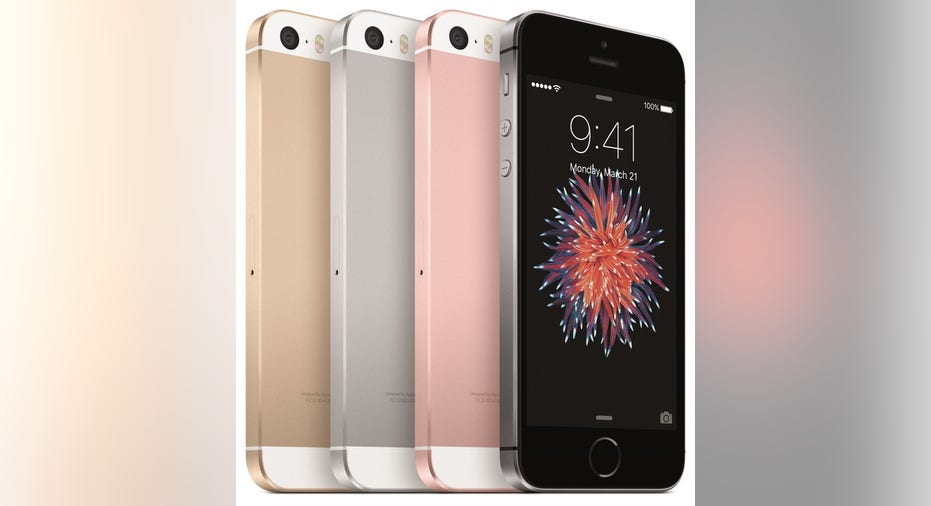Don't Expect a New Apple Inc. iPhone SE in Early 2017

Back in March, Apple (NASDAQ: AAPL) introduced a new, low-cost 4-inch iPhone, dubbed the iPhone SE. This device was compelling because it offered iPhone 6s-grade internals at a low price point and in the familiar, compact iPhone 5 and 5s form factor.
Image source: Apple.
Though Apple's flagship iPhone models usually see annual refreshes, KGI Securities analyst Ming-Chi Kuo, by way of 9to5Mac, says Apple doesn't plan to introduce a successor to the iPhone SE during the first half of fiscal year 2017.
Let's take a closer look at what Kuo says this might mean for Apple's iPhone business.
A tough year-over-year compare
Kuo notes that during the second quarter of 2016, the third quarter of Apple's fiscal year 2016, the iDevice maker saw "higher than expected" iPhone unit shipments thanks to "upbeat demand for the iPhone SE."
Kuo argues that the lack of a refreshed iPhone SE in the same period this year -- the second and third quarters of calendar and fiscal year 2017, respectively -- will lead to a drop in Apple's iPhone shipments from 40.4 million units last year to somewhere between 35 million and 40 million units this year.
A counterbalance to last year's iPhone SE ramp-up
Although it's true that Apple did see a boost during the third quarter of fiscal 2016 from the iPhone SE, as CEO Tim Cook mentioned that demand for the iPhone SE "outstripped supply throughout the quarter," there was another dynamic happening in parallel to the iPhone SE ramp-up: an iPhone channel inventory reduction.
During the fiscal third quarter of 2016, Apple said it reduced iPhone channel inventory levels by "over 4 million units." That means that because Apple overshipped iPhone units relative to demand in prior quarters, the company needed to undership end demand during the quarter to bring down iPhone channel inventory levels.
Also keep in mind that this overall iPhone channel inventory reduction came as Apple was probably trying to increase channel inventories of the iPhone SE. Cook said the company was "able to achieve supply/demand balance" on this product entering the fourth quarter of its fiscal year 2016.
This all suggests that Apple reduced channel inventory levels of its non-iPhone SE iPhone models by even more than 4 million units in that quarter.
Too pessimistic
Kuo's estimate that Apple will ship 35 million to 40 million iPhone units during the third quarter of its fiscal year 2017 seems pessimistic. If we assume that Apple won't have to drain channel inventory levels this time around -- a reasonable assumption, since Apple is probably managing channel inventories much more cautiously now -- then shipments of 35 million to 40 million iPhone units would imply a pretty dramatic year-over-year drop in demand.
To illustrate, note that without the 4 million-unit channel inventory reduction in the third quarter of fiscal year 2016, Apple would have shipped more along the lines of 44.4 million iPhone units in the third quarter of fiscal year 2016.
Taking the midpoint of Kuo's estimate for the third quarter of fiscal 2017, the analyst is seemingly calling for underlying iPhone unit demand to be down 15.5% year over year. Though a decline of this magnitude is possible, there are a number of factors working in Apple's favor this time around:
- In fiscal year 2016, Apple was dogged by tough year-over-year comparisons from the iPhone 6 "super-cycle." In fiscal year 2017, Apple has a much easier baseline to compare against.
- Apple's product lineup for the entirety of fiscal year 2017 -- the iPhone SE, iPhone 6s and 6s Plus, and iPhone 7 and 7 Plus -- is arguably more competitive than its product lineup was in the prior fiscal year.
Kuo's predictions may ultimately come to pass, but all we know now is that Apple is supply-constrained on iPhone 7 and iPhone 7 Plus, and management isn't quite sure if it will reach supply/demand balance on the latter by the end of the current quarter. So without more supporting data, I'd think twice before making investment decisions based on those predictions.
A secret billion-dollar stock opportunity The world's biggest tech company forgot to show you something, but a few Wall Street analysts and the Fool didn't miss a beat: There's a small company that's powering their brand-new gadgets and the coming revolution in technology. And we think its stock price has nearly unlimited room to run for early in-the-know investors! To be one of them, just click here.
Ashraf Eassa has no position in any stocks mentioned. The Motley Fool owns shares of and recommends Apple. The Motley Fool has the following options: long January 2018 $90 calls on Apple and short January 2018 $95 calls on Apple. Try any of our Foolish newsletter services free for 30 days. We Fools may not all hold the same opinions, but we all believe that considering a diverse range of insights makes us better investors. The Motley Fool has a disclosure policy.